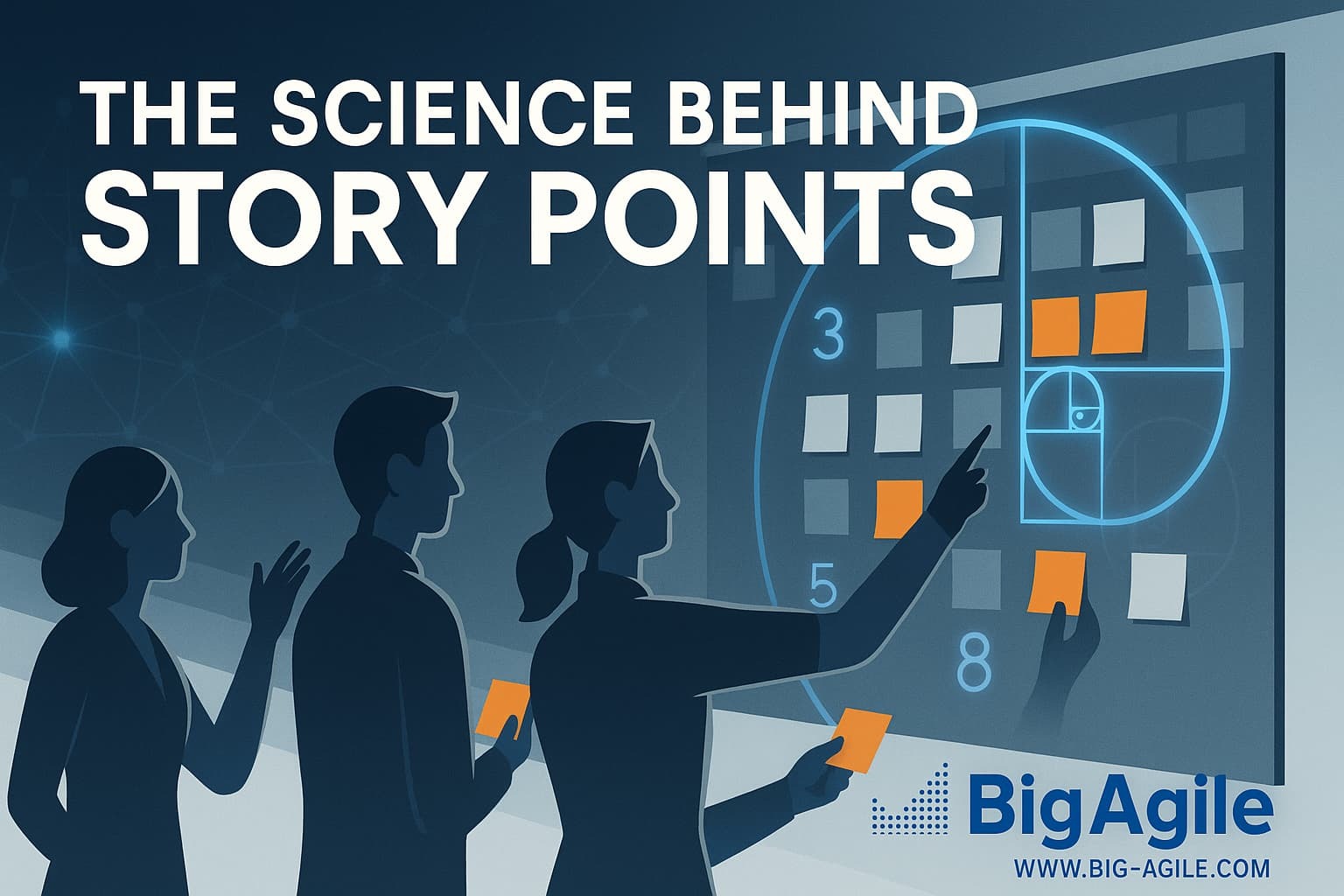
To many Scrum teams, Story Points are part of daily life, but when you ask why we use them, the answer is often vague:
“It’s just what “Agile” says to do.”
I want to anchor Story Points in something more profound than habit: physics, neuroscience, and mathematics, principles that give teams real predictive power over uncertainty.
I believe Story Points, Fibonacci numbers, and the golden ratio aren’t arbitrary tools but elegant solutions shaped by human perception and why they help us manage complexity.
The Human Brain: Built for Magnitude, Not Duration
Humans are biologically wired to judge relative size or effort, not absolute time durations. The Weber-Fechner Law, a foundational principle in psychophysics, captures this.
The law states that our brains perceive differences logarithmically, not linearly. In other words, we are good at noticing proportional changes (“this task feels like twice as much effort”) but bad at assigning exact numbers (“this will take 6.23 hours”).
Our goal is to be accurate first, gaining precision over time (as the project timeline gets closer to delivery, our accuracy and precision converge). Keynes famously said about precision, “You can be precisely wrong.” Our goal is to be roughly right over precisely wrong.
This is why debates drag on endlessly when teams try to estimate in hours or days. But when we estimate effort size (“Is this bigger than that?”), consensus forms faster.
Just-Noticeable Difference (JND) and the Power of Fibonacci
The Weber-Fechner Law introduces the idea of Just-Noticeable Difference (JND): the minor difference in stimulus that a person can detect.
In Scrum, this maps beautifully because our teams can’t reliably distinguish the magnitude of difference between a 13-point and a 14-point story, nor is it worth our team’s time to debate that low of stimuli.
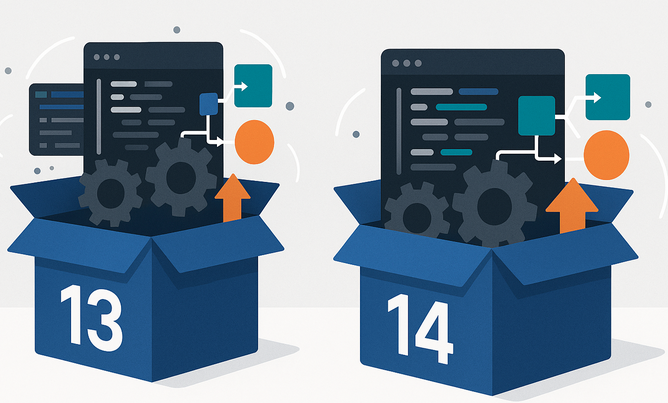
The more time we spend estimating our work items, the less time we spend building products. These numbers are just as much about spending as little time with our team and being as accurate as we can as they are about the accuracy of the estimates.
The team can sense the leap from a 13-point to a 20-point story (nearly double in magnitude). Modified Fibonacci Sequences (1, 2, 3, 5, 8, 13, 20, 40…) come into play here. Instead of debating 13 or 14, they have to decide if it is closer to 13 or 20.
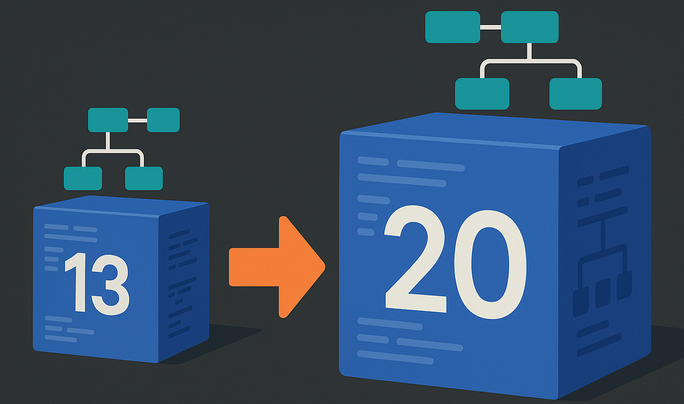
Fibonacci numbers grow in a non-linear, logarithmic fashion. Their ratio converges to the Golden Ratio (~1.618). This matches how humans naturally perceive effort magnitude. Thus, Modified Fibonacci sizing naturally mirrors how our brains work.
No wonder many teams “discover” Fibonacci without even being taught it. It’s a system optimized for human judgment. Some teams use the Powers of Twos (the same concept). Whatever numbering system you use, make sure it scales to minimize endless debates that the human brain is terrible at detecting in the way of low stimuli (in this case, size of effort).
Some teams use T-shirt sizing, which is also a great way to “categorize” effort of work into buckets. My issue is that they aren’t “addi-tive”.
What is a Small + Medium? Smedium? T-Shirt sizing has its place further up on the refinement scale to quickly guage effort, but at some point, I prefer teams work to break them into Epics (large numbers), then Stories (no more than ~1/3 of our historical velocity for Sprint ready work).
Story Points Are Pure Size, And That’s a Good Thing
One of the biggest misunderstandings is thinking Story Points are about time. They are not about duration. Story Points measure size, complexity, uncertainty, and risk, the mass, not the time.
Start with the baseline of effort. Complexity, Risk, and Uncertainty are sliders that might bump up the estimates of effort. Some teams use complexity as that baseline. However, there are plenty of examples of work that are not complex but still require a lot of effort, which results in more surprises towards the end of a project if we aren’t careful.
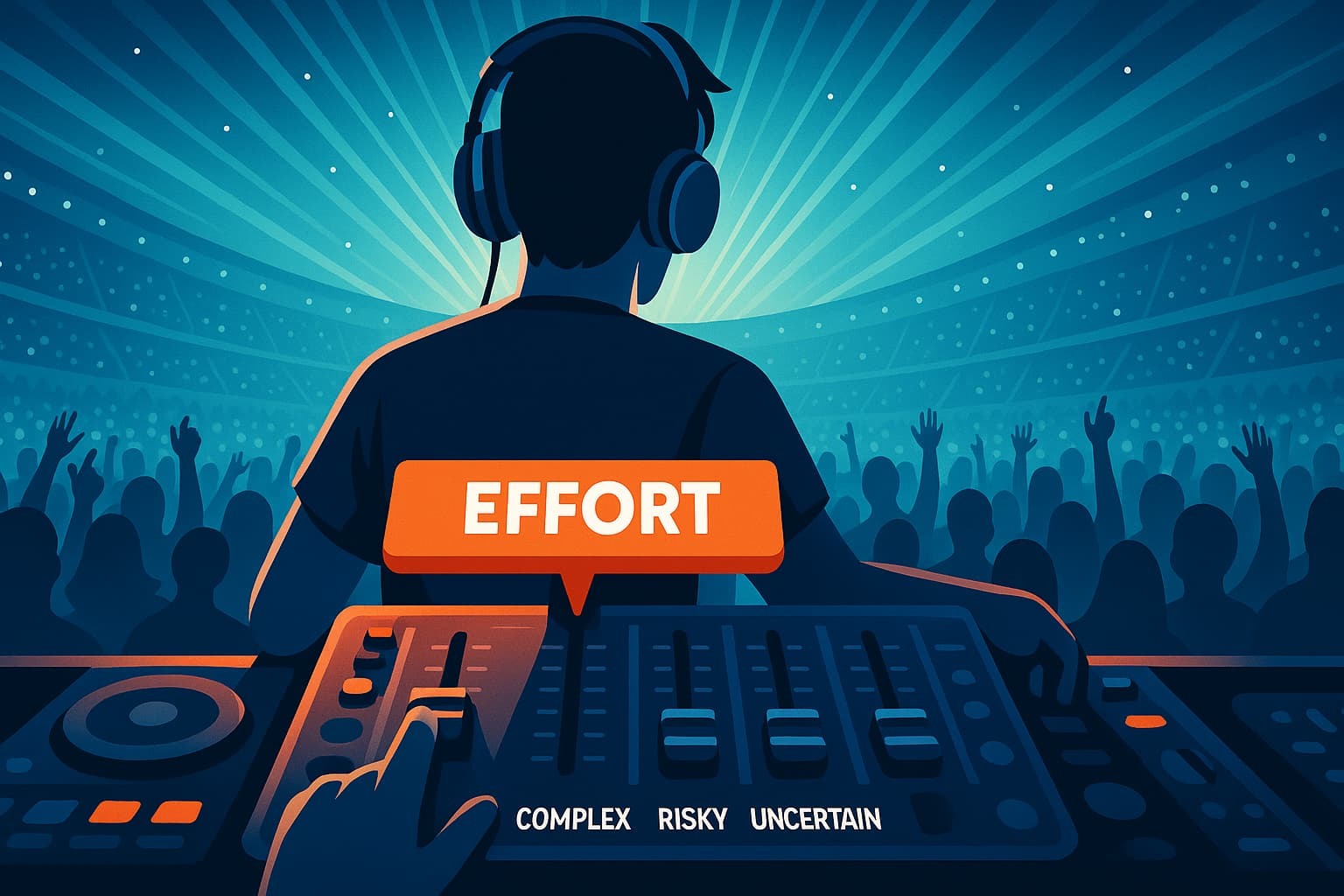
This matters because humans are notoriously bad at estimating work that takes more than an hour or two. The farther out you try to estimate absolute time, the worse the error bars become. Have You ever tried to guess how long a 6-month project will take? (Exactly.) In addition, time usually turns into a “percent complete marker.” This project is 82% complete. How many 80% complete projects have you worked on that the remaining 20% has taken longer than the 80% combined?
Time spent on the work doesn’t indicate whether it’s “done.” Story Points are only accredited to work that is “done.” So, the score is much easier to track with long-term estimating when using story points. By estimating pure size, we sidestep this cognitive trap. We focus on separating the size of work (the story points) from its duration (which is derived by tracking completed work each Sprint, velocity).
Why Story Points Are Better for Long-Term Forecasts
Estimating in ideal time (e.g., “this story will take 5 days”) sounds logical, but it fails in practice for several reasons:
Ideal Time Decays Over Time (Story Points Don't)
Imagine a team sizes a story at “5 ideal days” today.
Two months later, you lose a critical team member with key expertise. The 5-day story isn’t a 5-day story; it might take 10 or 15 days. You’d have to re-estimate this item and everything else that hasn’t been completed.
Story Points don’t have this problem. A 5-point story is still a 5-point story. It’s the team’s velocity that adjusts, not the estimate.
Before, it took half a sprint to finish a 5-point story if you could do 10 points per Sprint.
If, after losing someone, you only deliver 2 points per Sprint, that same 5-point story now spans multiple Sprints. You never had to re-estimate the work itself. This is why Story Points are a more resilient forecasting tool across changing teams, environments, and uncertainty.
Ideal Time Is Difficult To Be Agreed Upon Across Skill Levels
When you ask different people how long something will take, the answers vary wildly based on skills and experience:
You say it takes 20 minutes to hike a trail.
Your colleague says it takes 40 minutes.
Who’s right? Neither and both.
However, if we agree the trail is 1 mile long, it is objectively 1 mile. We can estimate other trails relative to that mile regardless of speed differences.
Story Points offer the same advantage:
Size is universal; duration is personal (or team-based).
Story Points Protect You From Premature Calendar Commitments
If you estimate in ideal days and say, “This will take 5 days,” a stakeholder can, and will, run off to their customers and promise it’s “done in a week.” Danger!
Using Story Points, stakeholders hear “5 points” and don’t immediately map that to a calendar date. This creates a necessary pause in the conversation. You control the translation from points to dates, using Velocity and Product Backlog priority.
For example:
You see that the stakeholder’s new 5-point story is 10th in priority.
You know your team does 10 points per Sprint. Roughly, their work would be ready in 3 quarters.
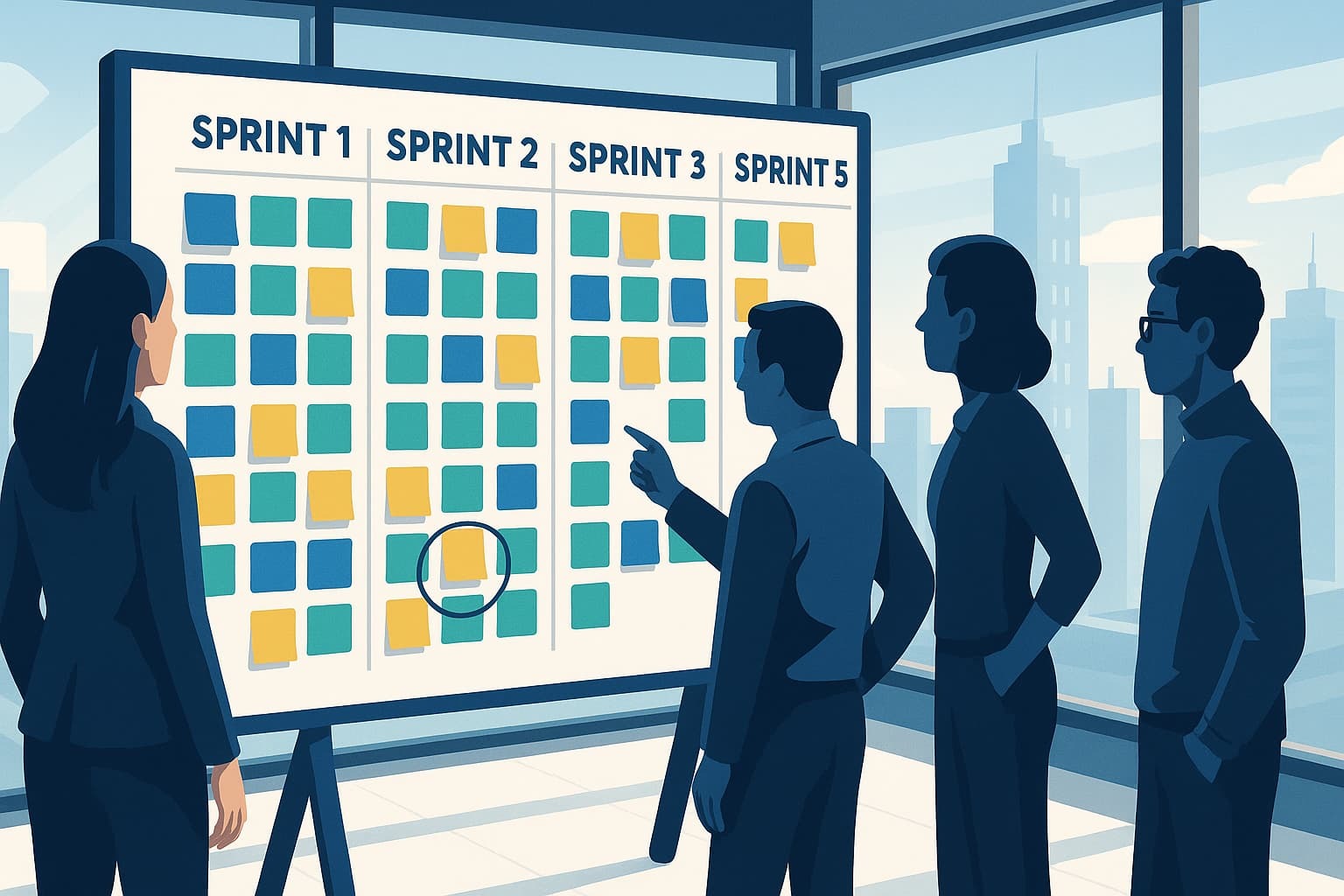
The stakeholder now gets a realistic forecast based on actual system capacity instead of wishful thinking based on naive “five-day” promises. Then, you can showcase how the priorities of work on the backlog trump the current one they just put in (or maybe not). In either case, they have to participate in the process to gauge queued work for the team as more or less important than the one just created.
Real Metrics Beat Wishful Thinking
Scrum teams succeed by embracing the truth:
We operate in complex, computationally irreducible systems. We can’t predict every twist and turn, but we can measure reality, adjust forecasts, and improve flow.
Using:
- Story Points (a stable measure of size)
- Velocity (observed delivery rate)
- Empirical forecasting (burnups, Monte Carlo methods)
allows us to manage work scientifically, not just optimistically.
We Build Products, Not Predictions
Our job is to build a product, not to estimate it endlessly.
Story Points free us to size work quickly, forecast realistically, and spend our energy where it matters most: delivering value to customers.
By grounding ourselves in human psychology, complexity science, and empirical process control, we can lead teams to greater agility, resilience, and success.
We offer private training courses focused on estimating, planning, or any topic your team requires. Additionally, feel free to register for one of our upcoming public courses.